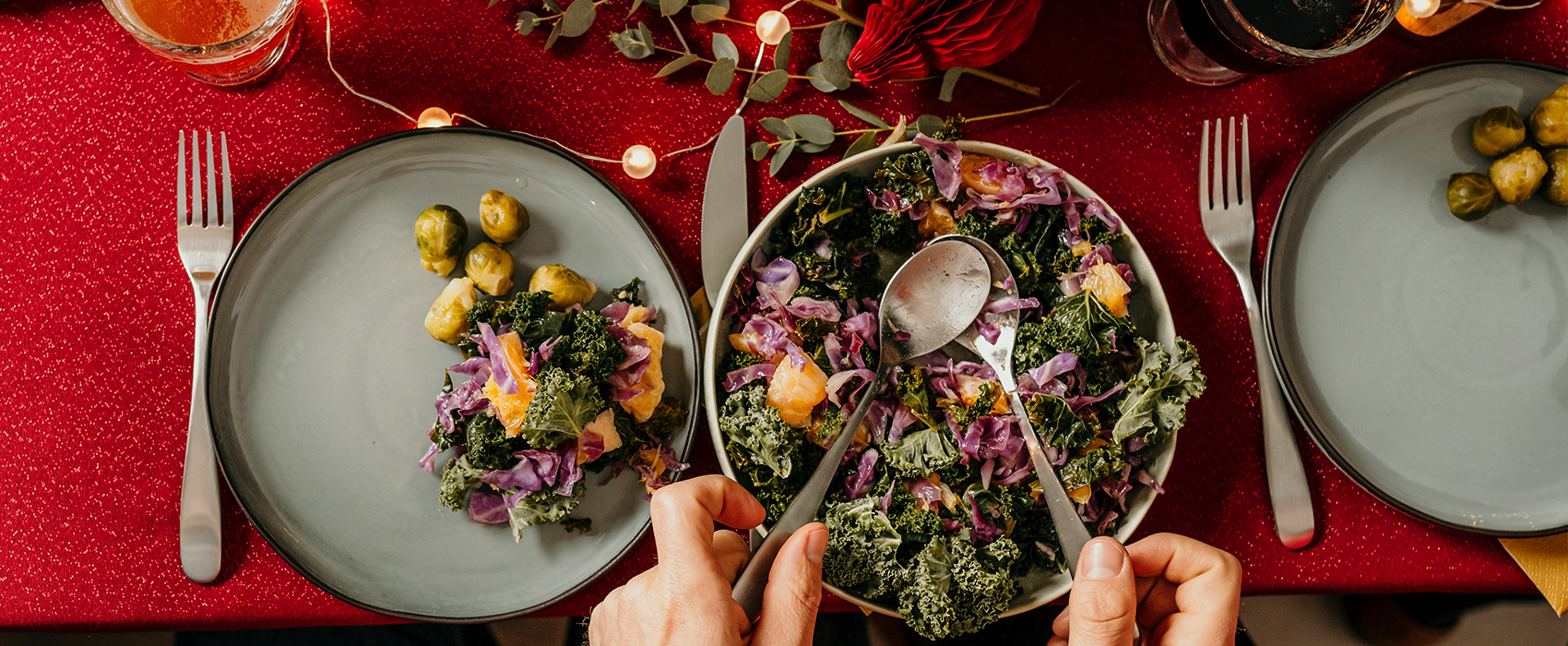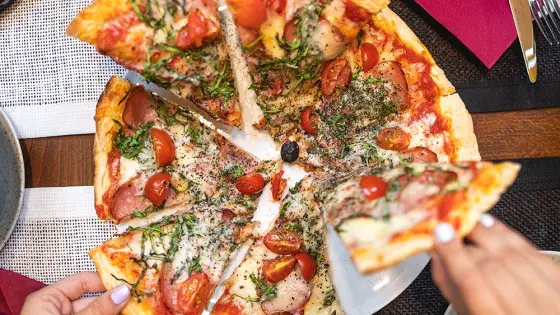When we think about festive nutrition, we tend to think about a time full of indulgence, eating foods that we wouldn’t typically eat at other times of the year.
It’s not surprising that our calorie intake is often higher than that of our average day, as we spoil ourselves with richer foods and larger quantities – but it is important to remember this is completely normal.
Within reason, the increased intake of energy shouldn’t have a profound impact on our long-term health, unless the change in eating is maintained. Typically, we spend a few days celebrating and then slowly but surely we click back into our normal routines and dietary patterns.
Changing our mindset to focus on the positives of festive food can make the season a whole lot more enjoyable. Seasonal foods can be highly nutritious and have many benefits for our health, as long as we are mindful of our consumption and cooking methods.
Let’s take a look at the most-used foods throughout the festive period, to learn how they benefit our health and what changes can be made to make them more nutritious:
Turkey
For many families, it simply isn't a Christmas dinner without a turkey, and for good reason.
The bird provides a rich source of protein, as well as multiple other micronutrients, such as tryptophan which contributes towards good sleep, the powerful antioxidant selenium, zinc which is crucial for immune health and vitamins B3, B6 and B12, which are important for the maintenance of our digestive health.
Top tip: Cook the turkey with the skin on to stop the meat drying out, but before consuming remove the skin and any visible fat, to reduce your saturated fat intake. Yes, it still tastes amazing!
Fruit & vegetables
The nutritional benefits of vegetables are manifold, providing a variety of micronutrients, fibre and even small amounts of protein.
Fill your festive table with as many colourful variations of fruit and vegetables as you can. An easy way to remember this can be, ‘eat the rainbow’, as the natural colours of fruit and vegetables can be a good guide to the nutrients they contain.
The main colour groups are:
- Green – Iron and Vitamin K (broccoli, cabbage, sprouts);
- Yellow/Orange – Vitamin A (yellow peppers, squash, corn, melon, pumpkins);
- Purple/Blue – Antioxidants (blueberries, black carrots, aubergine, red onion, beetroot);
- Red – Vitamin C (raspberries, red peppers, tomatoes).
There are also some easy tweaks you can make to your cooking method to ensure you are getting the best from your food:
- If adding bacon to sprouts, consider buying the leanest bacon you can find (and nitrate-free if your budget allows), rather than ‘streaky rashers’ or pancetta, to reduce saturated fat;
- Fry your vegetables in rapeseed or olive oil rather than butter;
- Roast your vegetables as this will enhance out the texture and flavours – carrot and beetroot are especially delicious roasted!
Potatoes
Potatoes have earned a rough reputation due to the high amount of carbohydrates they contain – but they actually have an abundance of benefits. Not only are they filling, which can be beneficial for smaller portions, but they are also high in fibre, potassium, Vitamins B6, C and folate.
Top tip: Whilst chefs may insist that goose fat is an essential for the perfect roastie, consider roasting your potatoes in an extra virgin olive oil for a healthier alternative. This oil has a relatively high smoke point of around 220 degrees C, which makes it ideal for roasting and getting that ever-craved, crisp roast potato.
Snacks
- If your festive party is nut tolerant, consider leaving out a bowl of nuts (shells on) and a nutcracker as an alternative to chocolate or sweets. The action of breaking the shell to retrieve the nut adds an element of mindfulness to the consumption, making the snack more enjoyable.
- Try leaving a bowl of clementines on display as another healthy alternative. Peeling the skin can become a fun game, such as who can peel it fastest or without breaking the layer of skin.
- Smoked salmon is a fantastic way to indulge, as it works well as a snack, breakfast or light lunch. Rich in healthy fats and low in carbs, you could pair it with sourdough or rye toast as a healthy starter.
If you are conscious of consuming too much, try eating fewer carbs throughout the day and see how much exercise you naturally do. You can always top up on carbs in the evening if you need some!
Summary: Our top 5 Christmas tips..
- Use the leanest bacon possible and trim additional fat.
- Include a good variety of vegetables.
- Include festive fruits and snacks rather than solely confectionery.
- Align indulgence and nutrition, such as eating smoked salmon.
- Try not to count the calories of every meal, as this isn’t productive to enjoy the day!
Heading into the New Year, try not to do anything radical. Return to your regular dietary pattern consciously, focusing on positive inclusions to your diet, rather than what you could remove. More importantly, don’t follow any fad diets that provide instant weight-loss solutions, these invariably in time lead to weight game through boredom, frustration or market availability.
Also, try to ensure that any nutrition-related resolutions are health – not aesthetic – motivated. There may be a positive aesthetic change as a biproduct, but first and foremost should be the focus on improving your health.

